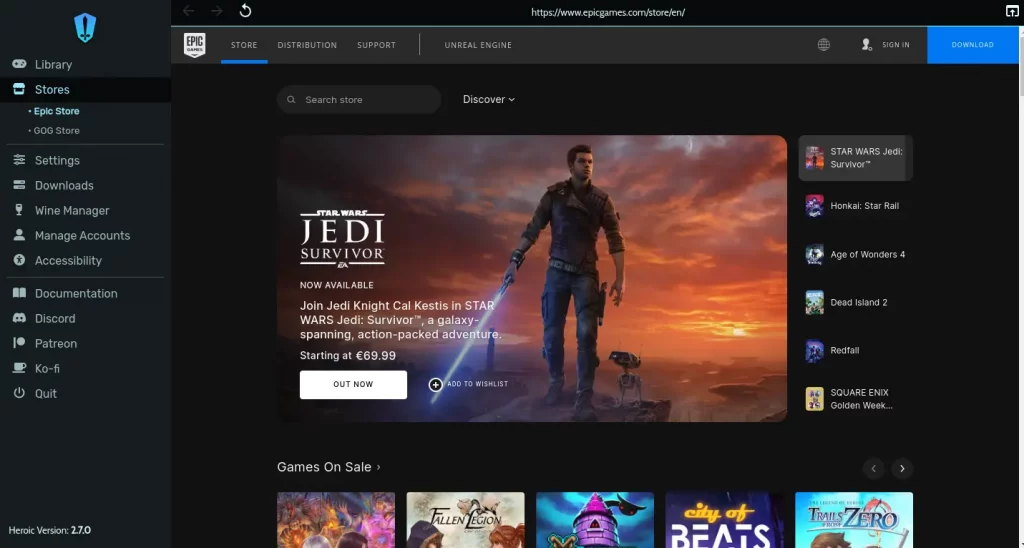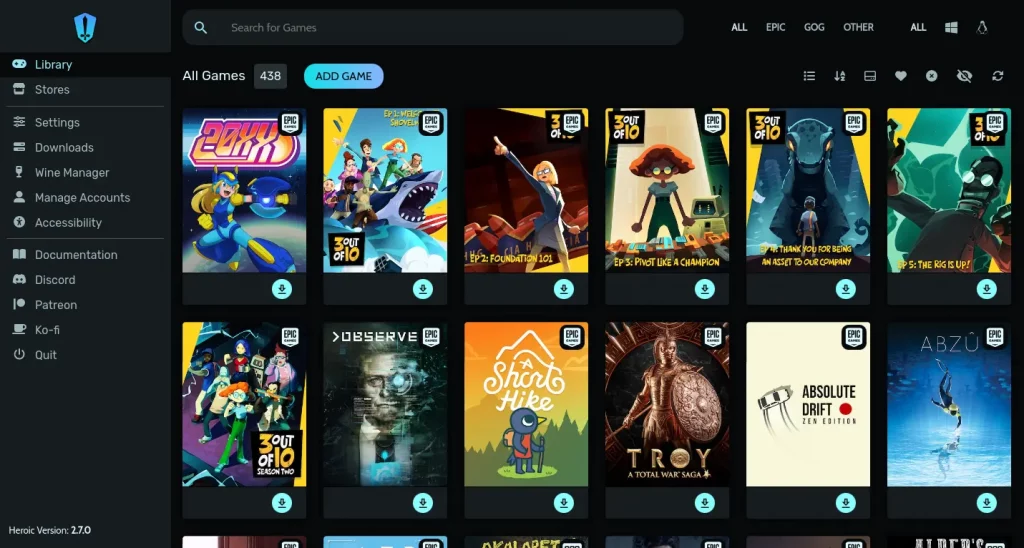
Aujourd’hui, je tiens vraiment à vous présenter un lanceur de jeu au top et qui s’appelle en toute modestie : Heroic !
Heroic
c’est
open source
, ça permet de lancer des jeux Epic Games en utilisant
Legendary
et GoG en utilisant
gogdl
, c’est compatible avec Linux, Windows et macOS et devinez quoi ? C’est même dispo sur SteamDeck ! Son interface utilisateur propose des paramètres Wine pour une expérience de jeu optimale sous Linux et macOS. Il supporte plus de 30 langues et permet d’ajouter des thèmes personnalisés.
Alors pourquoi devriez-vous utiliser Heroic ? Tout d’abord, c’est un lanceur
Open Source
, ce qui signifie que nous avons la possibilité d’examiner le code source et même de contribuer à son développement. De plus, il consomme vachement moins de ressources que l’Epic Games Launcher (EGL) et est en général beaucoup plus rapide.
Un exemple concret : lors de tests comparant le temps de lancement entre Heroic et EGL (epic games launcher), il a suffi d’environ
14,37 secondes
pour que Heroic se lance. EGL est, quant à lui, légèrement plus lent, prenant environ
16,45 secondes
. De même, lorsque l’on veut naviguer entre la boutique et la bibliothèque d’EGL, cela prend environ 2 secondes alors qu’avec Heroic c’est pratiquement instantané. En plus de cela, Heroic prend également beaucoup moins d’espace disque et de mémoire vive que EGL.

Ceci étant dit, il faut quand même admettre qu’il y a encore un peu de travail à faire sur Heroic en termes d’optimisation sur le chargement des images (2,7 secondes pour Heroic contre 2,9 secondes pour EGL).
Il est important de noter qu’actuellement, seuls les jeux nécessitant une activation dans une autre plateforme (Uplay, Origin) ne sont pas pris en charge par Heroic. Mais ne vous inquiétez pas ! Legendary a récemment ajouté une commande d’activation pour ces jeux. Nous pouvons donc nous attendre à ce que cette prise en charge soit bientôt disponible dans une prochaine version.
Depuis les dernières versions, Heroic peut utiliser EOS (services Epic Online), mais vous devrez mettre à jour DXVK et installer corefonts via winetricks au préalable. De son côté, Legendary avait déjà ajouté le support pour EOS avec sa version 0.20 .24 – mais rien que pour les utilisateurs de Windows. Snif.
En conclusion, si vous cherchez un bon petit lanceur de jeux communautaire avec un bon design et de chouettes fonctionnalités, je vous encourage vivement à essayer Heroic Games Launcher ! Vous ne serez pas déçu !
À découvrir ici






